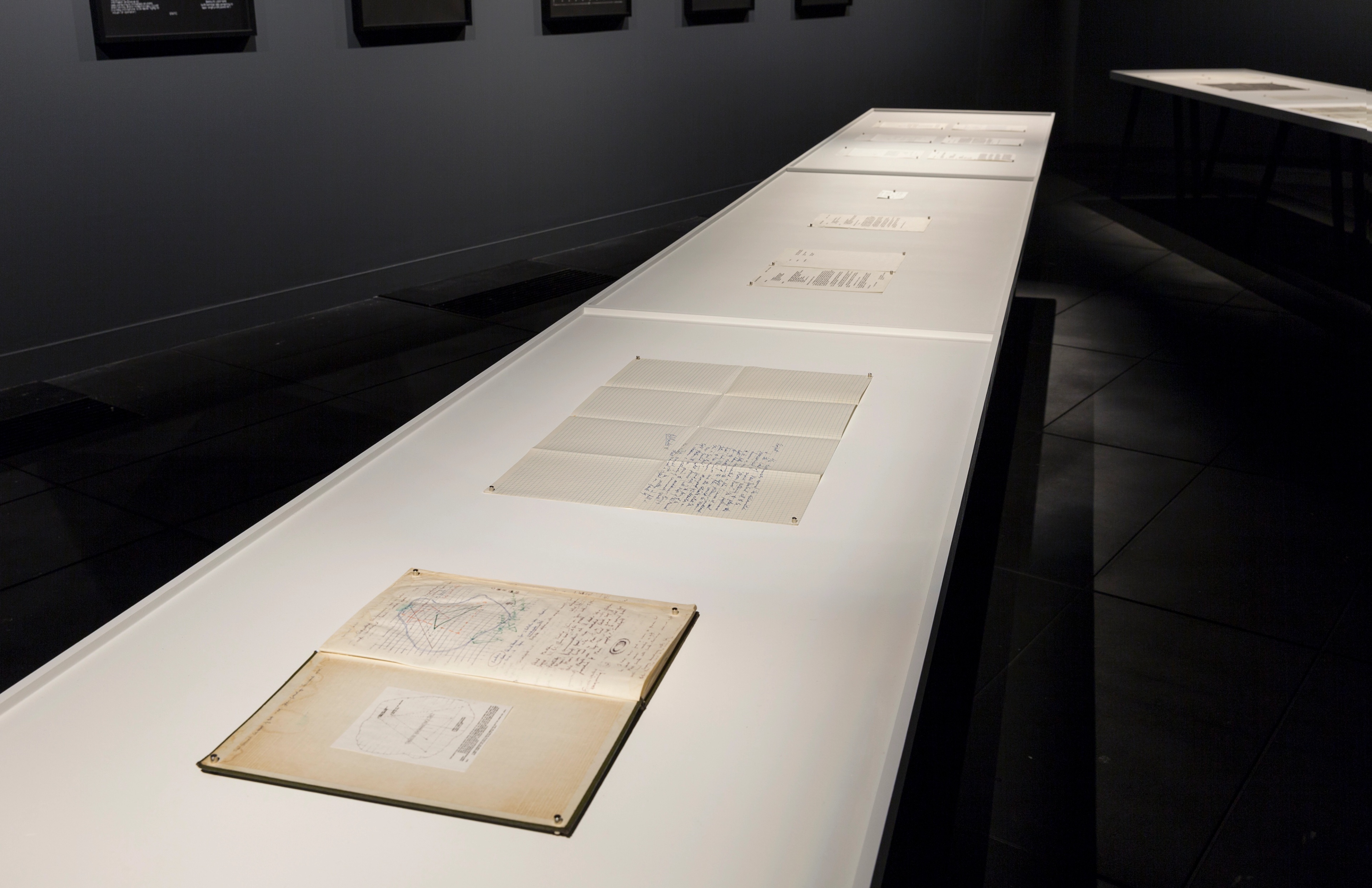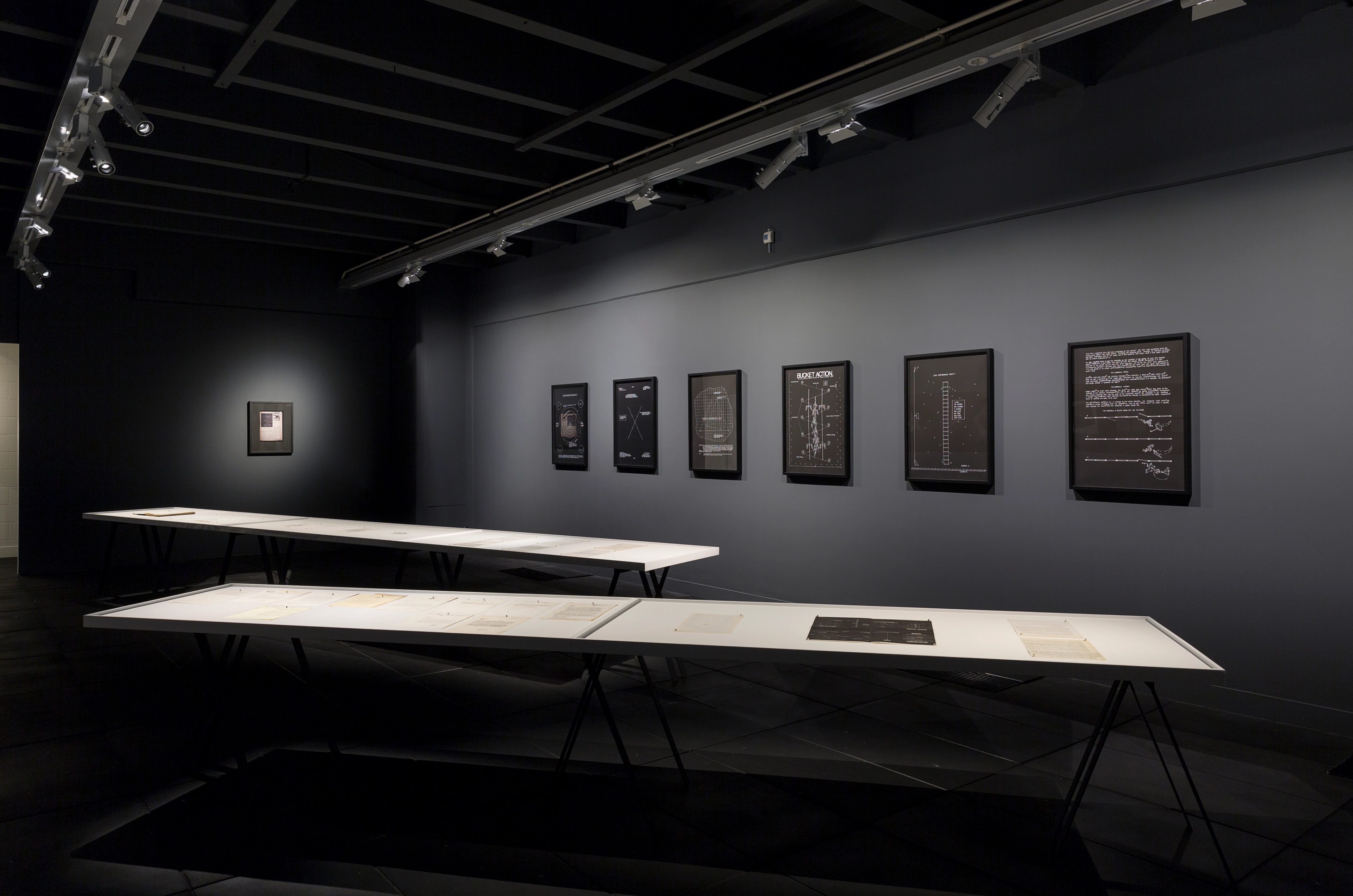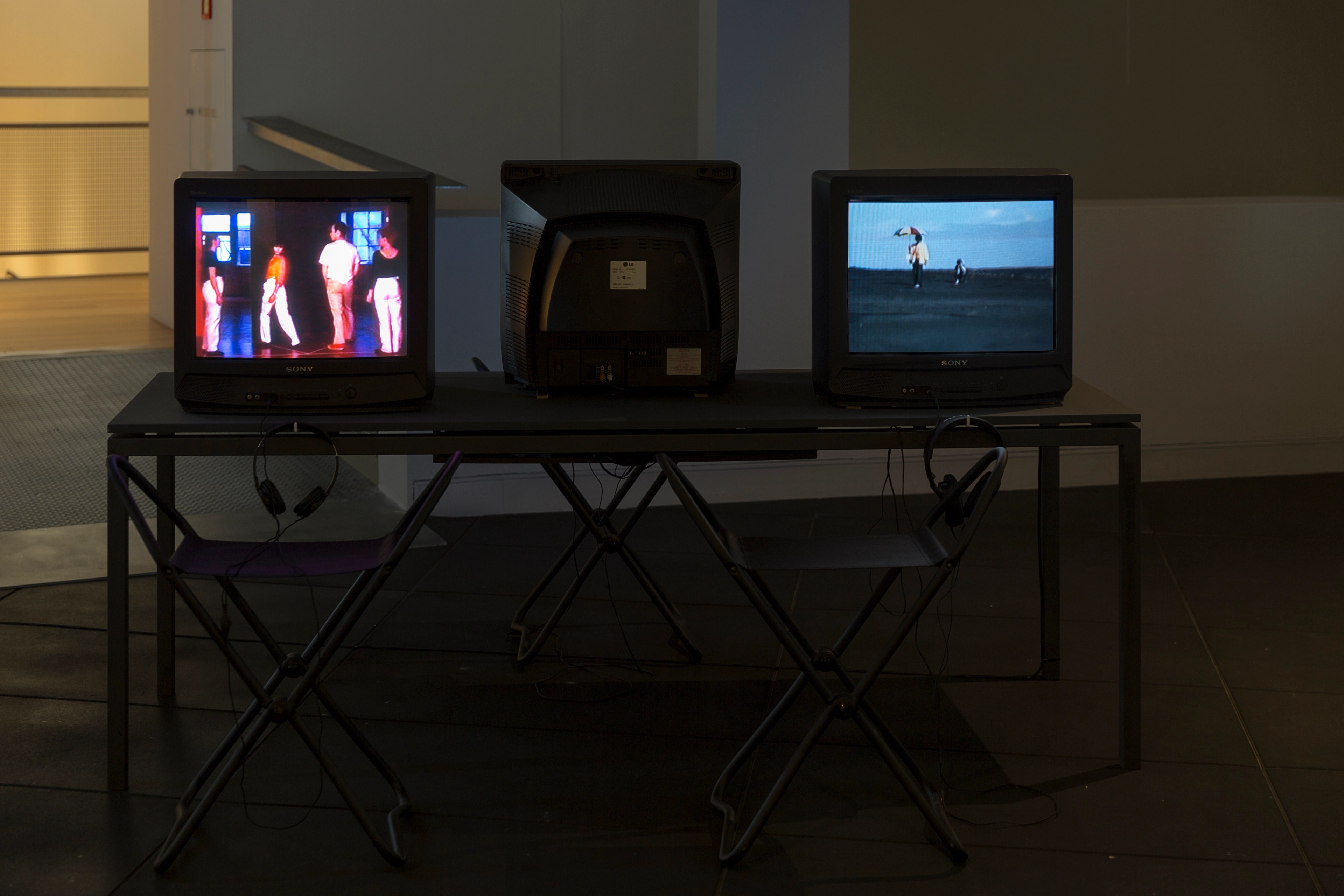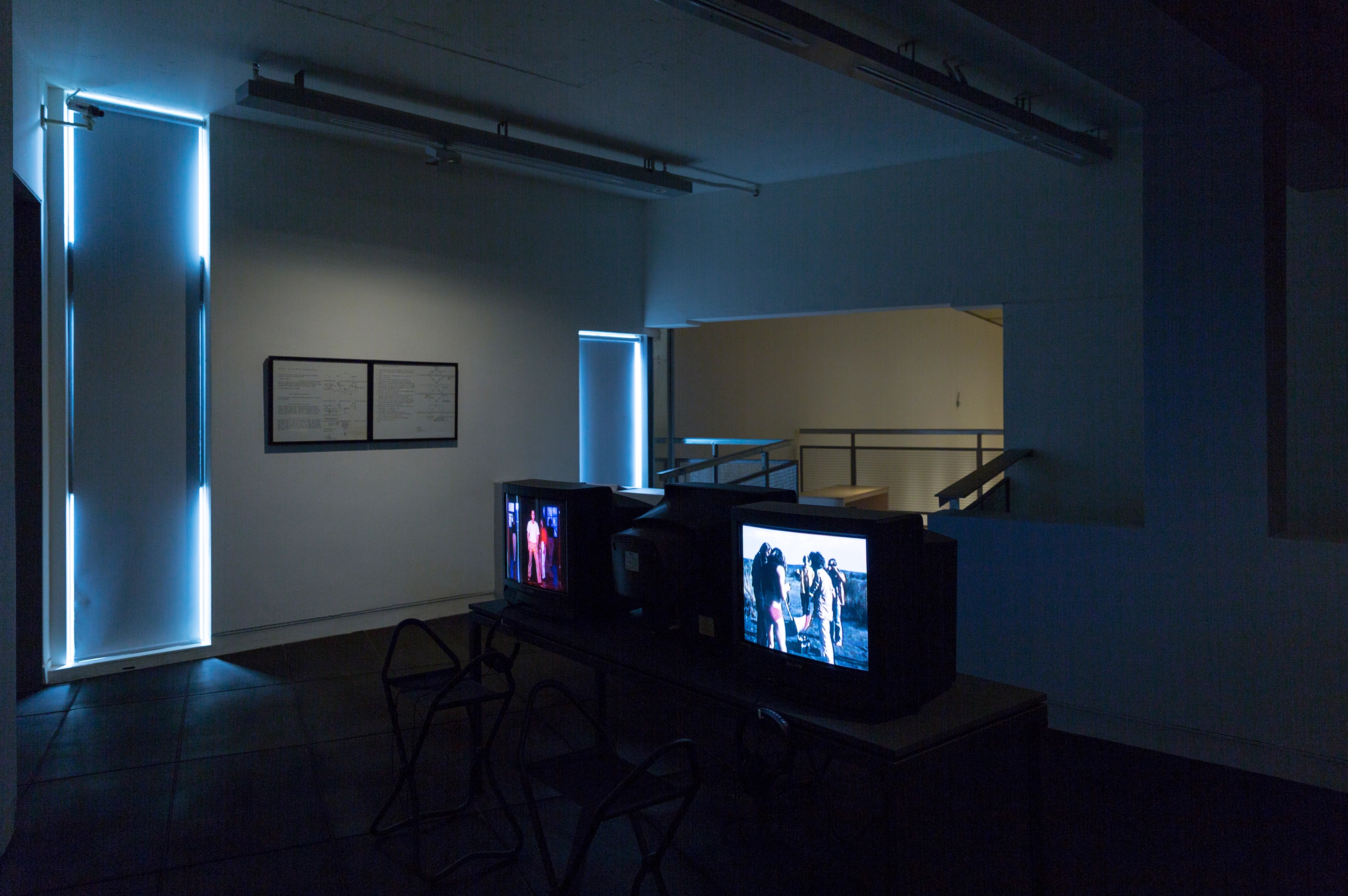Bruce Barber
Performance Scores
curated by Stephen Cleland
02 October – 18 December 2015
Bruce Barber: Performance Scores approached the first decade of work by Canada-based, New Zealand-born artist Bruce Barber, produced during a highly experimental period of global art practice in the 1970s. Unusually for Barber’s practice, it foregrounds the textual and printed matter underscoring the artist’s live activities, rather than their photographic documentation, in order to make a larger case for the relevance of this material within the conceptual and performance-based art of the era.
The exhibition focused on the period 1970 to 1980 and featured letters, instruction sheets, and detailed diagrammatic plans. Accompanied by selective historic video documentation, the project posed questions regarding the status of these paper artifacts: do they simply notate Barber’s concepts for yet-to-be realised performances, or are they self-contained art works in their own right? What relation do they have to those past live events and do they now serve as latent historic records or active propositions for future reenactments? Working from the fact that Barber has resisted restaging his performances and has only in recent years begun to present their photographic documentation, the exhibition treated these ‘performance scores’ as unsettling representations that recode the conventions of architectural drawing and musical notation with more subjective forms of spatial and temporal mapping.
From 1970-1975 Barber was based in Auckland and attended Elam School of Fine Arts where, working with the influential teacher Jim Allen, he developed an ambitious body of performance works. In these early activities he often subjected himself and his collaborators to challenging exercises: such as being blindfolded whilst navigating the rim of an extinct volcano (Mt Eden Crater Performance, 1973) or carrying a fish through a complex obstacle course with a bucket over his head (Bucket Action, 1974). Barber described these performances as ‘endurance-based’ due to the strenuous nature of the activities and their extended duration. From 1976, after his move to Halifax, Canada, where he studied and then joined the faculty of the Nova Scotia School of Art and Design (NSCAD), a hotbed for conceptual art in the 1970s and early 1980s, he honed his gallery-based performances and continued to develop a series of ‘audience arrangements’ that signaled a growing interest in the social dimension of his performance-based practice.
Bruce Barber lives and works in Halifax. The curator acknowledges the generous support of the artist and our additional lenders for this project: Michael Lett, Auckland and the E H McCormick Research Library, Auckland Art Gallery Toi o Tāmaki.
This exhibition was staged concurrently with Traces of the Wake: The Etching Revival in Britain and Beyond and Fragments of a World.

Installation view, Bruce Barber: Performance Scores, Adam Art Gallery Te Pātaka Toi, Victoria University of Wellington, 2015. Photo: Shaun Waugh

Installation view, Bruce Barber: Performance Scores, Adam Art Gallery Te Pātaka Toi, Victoria University of Wellington, 2015. Photo: Shaun Waugh

Installation view, Bruce Barber: Performance Scores, Adam Art Gallery Te Pātaka Toi, Victoria University of Wellington, 2015. Photo: Shaun Waugh

Installation view, Bruce Barber: Performance Scores, Adam Art Gallery Te Pātaka Toi, Victoria University of Wellington, 2015. Photo: Shaun Waugh

Installation view, Bruce Barber: Performance Scores, Adam Art Gallery Te Pātaka Toi, Victoria University of Wellington, 2015. Photo: Shaun Waugh

Installation view, Bruce Barber: Performance Scores, Adam Art Gallery Te Pātaka Toi, Victoria University of Wellington, 2015. Photo: Shaun Waugh

Installation view, Bruce Barber: Performance Scores, Adam Art Gallery Te Pātaka Toi, Victoria University of Wellington, 2015. Photo: Shaun Waugh